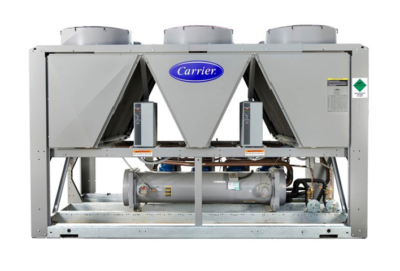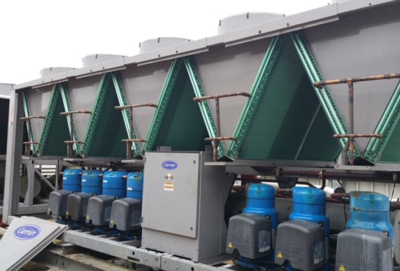Tired of frequent leaks and maintenance issues with your Carrier AquaSnap chiller? Discover how a microchannel coil conversion can boost efficiency, reliability, and long-term savings. When it comes to commercial HVAC systems, the Carrier AquaSnap chiller is one of the most commonly used units. However, many owners face recurring issues due to its all-aluminum microchannel condenser coils. If you're looking for a reliable solution, converting to a copper tube, aluminum fin coil might be the best option. Microchannel coils have been widely adopted in the industry for their cost-effectiveness and reduced refrigerant use. But they come with several drawbacks that can affect performance and increase maintenance costs over time. The Challenges of Microchannel Coils One of the biggest issues with microchannel coils is their susceptibility to dirt buildup. Without regular cleaning, this can lead to increased head pressure and system inefficiencies. Plus, these coils require precise refrigerant charging due to their low refrigerant capacity. Any miscalculation can result in poor performance or even system failure. Repairing microchannel coils is also more complex. It often requires specialized techniques like two-part epoxy or torch welding, which can be both time-consuming and risky. Aluminum is also vulnerable to weathering and corrosion, making repairs less durable over time. Another common issue is connection leaks where copper and aluminum meet, which can lead to costly refrigerant loss. Why Choose a Copper Tube, Aluminum Fin Coil? Switching to a high-quality copper tube, aluminum fin coil offers numerous advantages. Not only does it improve system performance, but it also increases reliability and extends the life of your chiller. This type of coil is easier to maintain and repair, saving you time and money in the long run. Key benefits include: Completing the Circuit Properly If you're replacing the microchannel condenser coil with a copper tube version, it's essential to complete the circuit properly. For example, if your unit has four coils per circuit and one fails, you must replace all four to ensure balanced refrigerant flow and pressure. Mixing microchannel and copper tube coils can cause operational problems due to differences in pressure drop and refrigerant charge requirements. Why Choose Us for Your Microchannel Conversion? While the Carrier AquaSnap is one of the most common units requiring a microchannel conversion, this upgrade is available for a wide range of commercial HVAC systems. At Nationwide Coils, we’ve completed thousands of conversions over the years, earning us the title of #MastersOfMicrochannelConversion. If you're ready to upgrade your system and enjoy improved performance and reliability, contact our experts today. Call 1-888-CoilPro or email us anytime. Just provide the make and model of your unit, and we’ll get started right away. Variable valve timing (VVT) solenoid or oil control valve controls the oil flow according to the engine speed and load. VVT solenoid is a vital part of the variable valve timing system. Nissan Variable Valve Timing,Nissan Vvt Solenoid,Vvt Solenoid Nissan Altima,Vvt Solenoid Valve Wenzhou Zhongking Parts Co.,ltd , https://www.oemvvt.comUpgrading Your Carrier® AquaSnap® Chiller: A Smart Move for Performance and Longevity

A Carrier AquaSnap chiller equipped with all-aluminum microchannel coils.

A Carrier AquaSnap chiller fitted with copper tube, aluminum fin coils.
The Oil Control Valve (OCV) is a a critical part used in every engine that is fitted with variable valve technology (VVT). A single control valve will regulate the supply of oil to a designated VVT hub, to advance or retard the timing by altering the camshaft angle position. Controlled by the ECU, the OCV receives electrical signals, instructing it to adjust the oil flow as required, in accordance to current driving conditions.